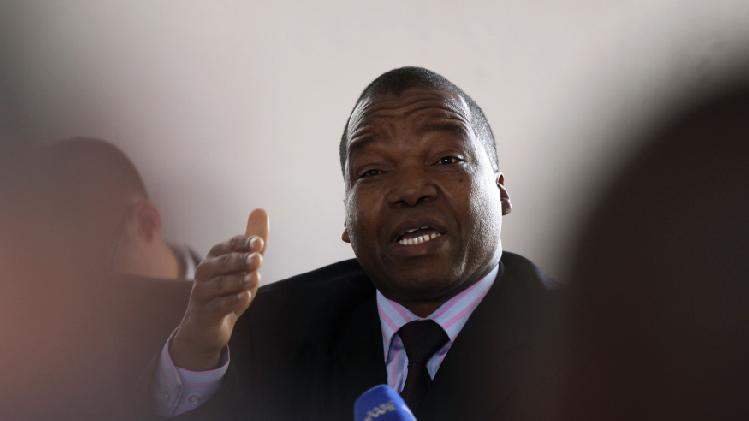Editorial Comment: Reflections on National Unity Day

 TODAY we join the nation in celebrating the 17th anniversary of National Unity Day, a public holiday gazetted through Statutory Instrument 156 of 1997, to mark the signing of the Unity Accord between the country’s two revolutionary parties, Zanu-PF and PF-Zapu on December 22, 1987 and the 27th anniversary of the historic accord. The existence of the prefix/suffix PF in the two parties names denoted a history of shared values, for the two parties had come together to form the Patriotic Front in the late 1970s, they consequently brought the Rhodesian Front to its knees culminating in the constitutional conference which was held at Lancaster House in London in 1979.
TODAY we join the nation in celebrating the 17th anniversary of National Unity Day, a public holiday gazetted through Statutory Instrument 156 of 1997, to mark the signing of the Unity Accord between the country’s two revolutionary parties, Zanu-PF and PF-Zapu on December 22, 1987 and the 27th anniversary of the historic accord. The existence of the prefix/suffix PF in the two parties names denoted a history of shared values, for the two parties had come together to form the Patriotic Front in the late 1970s, they consequently brought the Rhodesian Front to its knees culminating in the constitutional conference which was held at Lancaster House in London in 1979.
The two parties went to the constitutional conference as a united front. It was only after they had prevailed against the common enemy that they decided to contest the post independence elections as separate entities. This was a mistake the vanquished Rhodesians, who were monitoring proceedings closely latched on to.
With the aid of apartheid South Africa they sponsored the dissident insurrection that became a scourge in the Midlands and Matabeleland provinces between 1980 and 1983. The State reacted swiftly by deploying forces to quell these disturbances, in what came to be known as Gukurahundi.
The Gukurahundi campaign has been used by detractors as a way of trying to trash the Unity Accord portraying it as a Zanu-PF government genocidal excess, yet as is captured in the preamble to the Unity Accord that says in part, “Determined to eliminate and end the insecurity and violence caused by dissidents in Matabeleland’’, both Zanu-PF and PF-Zapu were committed to exterminating the dissident menace.
The Unity Accord was not signed between the Shona-speaking and IsiNdebele-speaking people per se, but by the two revolutionary parties on behalf of the people of Zimbabwe; black, white, Asian, mixed race.
Zanu-PF was not made up exclusively of people from Mashonaland, neither was PF-Zapu made up exclusively of people from Matabeleland, the parties had a cosmopolitan, national composition which encompassed all the ethnic, and even racial groups in the country.
More so when the liberation war was waged, it was not waged as a ZANLA or ZIPRA war, but a Zimbabwean war. It is only the Rhodesians who wanted people to identify themselves as tribes rather than nationalities who named the country’s provinces along tribal lines.
The south-western parts of the country were dubbed Matabeleland, meaning the land of the Matabele; the north-eastern parts were dubbed Mashonaland, the land of the Shonas, the Eastern Highlands the land of the Manyika (Manicaland)
It is quite regrettable that we have kept these labels to date, yet no area in Zimbabwe exclusively belongs to one particular ethnic group as migration and inter-marriages have negated these artificial labels. Government should look into this. The provinces could be named by geographical position, e.g the Midlands, or prominent feature, Masvingo.
It would also be good if Government could see to it that Shona and IsiNdebele are taught nationwide, as is done with English, since language is a unifier and carrier of culture.
We say so because detractors have always exploited even linguistic differences in their attempts to foster disunity and the strongest weapon they use is brewing mistrust between the Ndebele speaking and Shona speaking groups. Their favourite weapons are the alleged Gukurahundi massacres, which are always peddled without regard to historical context; and the socio-economic disparities between Matabeleland and Mashonaland, here again the agro-ecological context is ignored.
It was precisely for these reasons that President Mugabe did not publish the findings of the Chihambakwe Commission that was appointed to investigate the Matabeleland disturbances.
Detractors then sponsored their own ‘commission’ under the aegis of the Legal Resources Foundation (LRF), which was then headed by David Coltart, the MDC MP for Bulawayo North East and the Catholic Commission for Justice and Peace (CCJP) which was headed by Mike Auret, the erstwhile MDC MP for Harare Central.
The LRF and the CCJP published their report titled “Breaking the Silence building true peace” in 1997, two years before the MDC was launched with the two drafters as prominent members of the national executive. The MDC has, at every opportunity, sought to open the wounds of the Gukurahundi era, and religiously carries the LRF/CCJP report on its web site.
As we celebrate National Unity Day today, we must take time to reflect on the fact that the peace we take for granted did not come on a silver platter, thousands of lives were lost in the two Chimurenga wars.
The peace is also constantly under threat from those who would rather see us hacking each other to death as they plunder our resources with impunity. We must question the motives of those who at every opportunity seek to divide us. We can differ on other things, but we should close ranks whenever our unity is threatened.










Comments